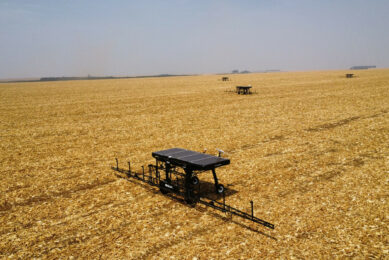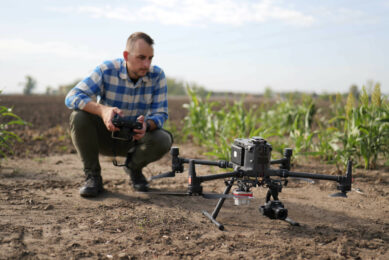Autonomous drone improves irrigation

Engineers from Australian Monash University in Melbourne are using autonomous drone technology to improve irrigation practices. Eventually the drone technology will be used to reduce the use of water and optimise yield.
Professor Jeff Walker from the Australian Monash University has been working on soil moisture mapping through remote sensing for more than 15 years. “Nasa, European Space Agency and the Japanese space agencies have had soil moisture teams for their various satellites,” he explains. “But the challenge of these satellite missions has been course resolution. It was really too course for agriculture. My idea was: how can we help agriculture and improve on this?”
Global warming
Walker emphasises that Australia is one of the driest continents on earth and is becoming even drier with global warming. “We were wondering how we could bring improved mapping technology to farmers in a way that they need it. Basically the way to improve this spacial resolution is moving the technology closer to the ground.”
Also read: NASA maps soil moisture on a global scale
Optical technology
The team of Monash University started with optical technology to make sure the concept worked. “We used it as a stepping stone to microwave technology,” says Prof Walker. He explains that the full system should work autonomous. “I am not focusing on the flying function at the moment, although I think that is an important step and can be easily done. Having said that, there are regulations at the moment that preclude this. But hopefully going forward we will be able to go around those regulations.”
Autonomous soil moisture mapping system
In the tests with optical technology Prof Walker and his team have been focusing on an autonomous soil moisture mapping system for irrigated paddocks. There were tests at a dairy farm using a centre pivot irrigator and at a crop farm using a linear shift irrigator. Prof Walker: “We made some moisture maps and compared those to ground measurements. We demonstrated that it is possible to get autonomous maps.”
Text continues underneath image
A farmer first has to identify the field, for example on a Google Earth type image. The system will then automatically determine the height of flying, the flight lines and other necessary specifics. “You can effectively press the go button and it will fly, collect the data, come back, automatically download the data and run it through the processing stage,” says Prof Walker. “It will then produce a map. That map can be fed into the irrigation system to optimise the water delivery.”
Microwave sensing technology on drones
In the past 2 years Prof Walker and his team performed tests with optical cameras. Now the team focusses on passive microwave sensing technology on drones, using L-band waves. The team is planning to start tests with a L-band microwave system in September. “It will give us a far more accurate picture than the optical mapping did. Vegetation will not affect the picture of the soil too much.”
In the long run the team wants to use P-band microwave technology. “The P-band is a longer wave again,” he says. “The vegetation will be almost entirely transparent using P-band. Also the depth into the soil will be greater. We will see 10 to 15 centimetres into the soil.”
The full interview with Jeff Walker can be read in the digital issue of Future Farming. Go to the magazine overview page and sign up with your current website login. Not a login yet? It only takes a few minutes. Click here to make one.
Join 17,000+ subscribers
Subscribe to our newsletter to stay updated about all the need-to-know content in the agricultural sector, two times a week.



